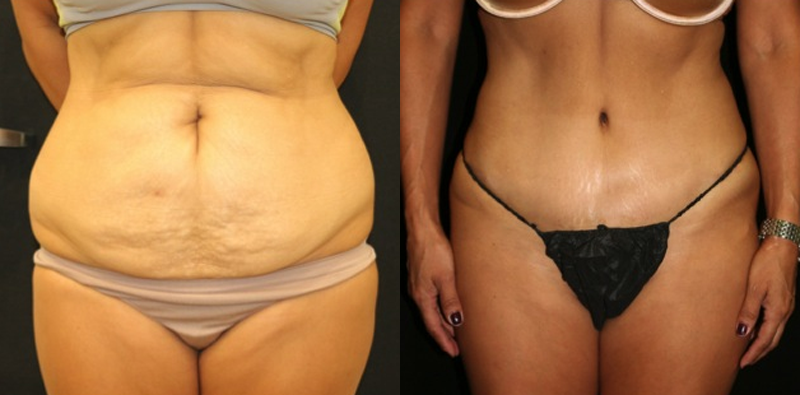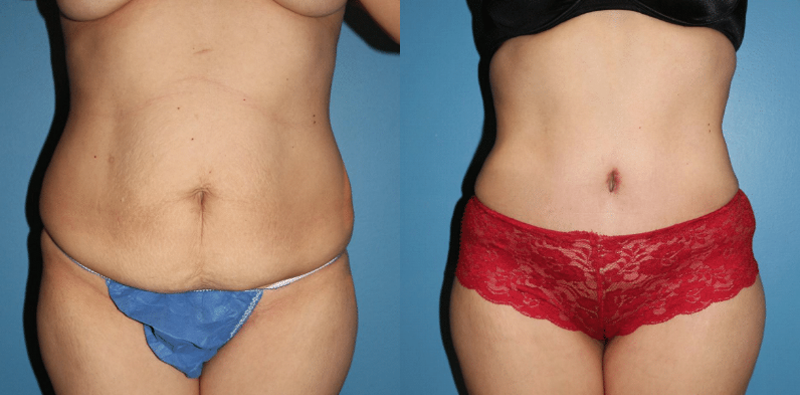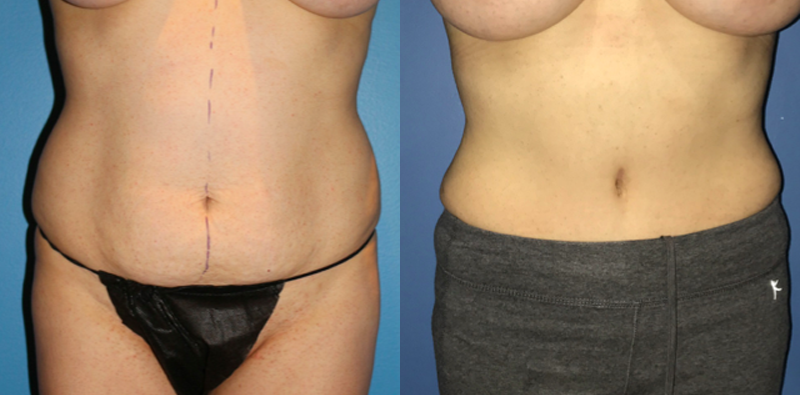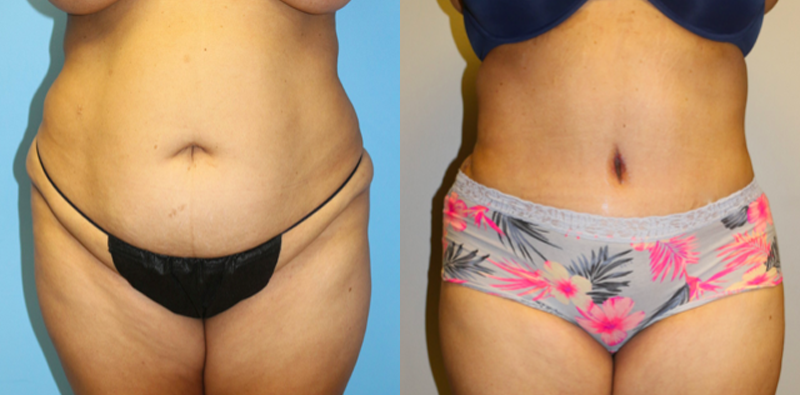The “tummy tuck” procedure is the second most common cosmetic procedure performed in the United States. This is a great surgery for patients who have excessive skin and/or fat of the anterior abdomen, those who have loose deflated excess abdominal skin due to pregnancy or weight loss, and those who have an overhang of abdominal tissue (pannus) over their waist. Patients often complain of difficulty fitting into clothes, rashes, irritation, sweating underneath skin folds, and overall poor self-esteem due to inability to wear clothes they enjoy and self-consciousness. Therefore, a tummy tuck can be a very rewarding procedure, in that it re-contours the abdominal region to create a flatter more refined, youthful, and rejuvenated appearance. As part of the procedure, it also strengthens the abdominal wall, which often is stretched and weakened from pregnancy or weight gain. This is a surgical procedure that provides significant patient satisfaction as they frequently comment on the ability to dress in desired clothing and are able to go out and have an improved self-confidence.
There are two-types of tummy tucks: a mini and a full. Basically, if you have a small to moderate amount of extra skin and tissue located below the belly button, or if you desire removal of only the overhanging portion of abdominal tissue (pannus), you would most likely benefit from just a mini tummy tuck. This involves elevating the abdominal tissue above the rectus muscle up to the level of the belly button. The excessive tissue is pulled down and excised to create a flat contour. The belly button remains in the same position and is not manipulated.
However, if you have extra skin and fatty tissue located above the belly button, or if you have weakness of the abdominal wall (rectus diastasis) due to pregnancy or weight gain, you would benefit from a full abdominoplasty. This involves elevating the abdominal tissue above the rectus muscle all the way to the level of the breast bone to address the excessive tissue of the entire anterior abdomen. The belly button is relocated into a new position while excess tissue is pulled down and excised to create a flat contour. During this procedure, the abdominal wall muscles (rectus muscles) are tightened to provide increased strength if any laxity is noted. Drains are placed to prevent fluid collection. It is important to note, as with any other body contouring procedure, you are trading an improved, rejuvenated contour for a scar. The scar is longitudinal and travels from hip bone to hip bone, but is hidden underneath the underwear line, as to be unnoticeable even in minimal clothing. During your consultation, Dr. Tsai will present you with all the possible options in detail and work with you to individualize treatment according to your specific goals and expectations to provide you with the best possible result.
PROCEDURE
The mini tuck typically takes around 1-2 hours to complete, and the full tuck takes 3-4 hours to complete. This procedure is performed under general anesthesia (fully asleep) in the adjacent surgicenter. Patients return home the same day as the procedure so transportation will need to be arranged. Your first checkup will be the following day in the clinic. Bandages are removed several days thereafter, drains are removed within 1-2 weeks, and patients usually return to normal daily activities within 2 weeks. Pain is tolerated with prescribed oral pain medication. Exercise is resumed approximately 4-6 weeks after the procedure.
It is important to mention that a tummy tuck does not substitute for a good diet and health regimen. Many patients are not candidates for a tummy tuck. This procedure only treats the skin and fatty tissue located above the abdominal wall or rectus muscle. For those patients who have the round “beer gut” abdomen who are desiring a flatter contour, this procedure will not correct your deformity as most of the fat in these patients is located inside the abdomen, surrounding the organs, and cannot be removed with any kind of surgery. Diet and exercise is the only treatment to remove this intra-abdominal fat. After weight loss and deflation, if there is still overlying excess tissue, then patients may in the future become a candidate for a tummy tuck. Another important group of patients to be cautious about are those that have previous abdominal surgeries. Laparoscopic surgeries are generally fine. However, if you have a large incisional scar on your abdomen, this may preclude you from having a tummy tuck as some of the blood supply and nutrients to the abdominal tissue have already been compromised and you could possibly have significant wound healing complications if the surgery were to proceed.
TUMMY TUCK RISKS AND PRE-OP CONCERNS
Active smoking is also a serious contraindication for this surgery. The nicotine creates spasms and constriction of the blood vessels. After such a large surgery this could potentially lead to wound healing problems. However, if smoking and nicotine use is stopped 4 weeks before and continued 4 weeks after surgery, then this procedure may be performed safely. Dr. Tsai will review your medical history and help optimize your health before surgery in order to perform the procedure in a safe manner so you obtain the results you desire and deserve.
Patient Feedback
Meet the Doctor
Dr. Roger Tsai
Dr. Roger Tsai is a board certified plastic surgeon in Beverly Hills, providing care to patients from all over the world. His interests include aesthetic cosmetic surgery that encompasses the entire body as a whole, specializing in all aspects of plastic and reconstructive surgery. He also performs non-invasive rejuvenation and has a special interest in health and nutrition.




